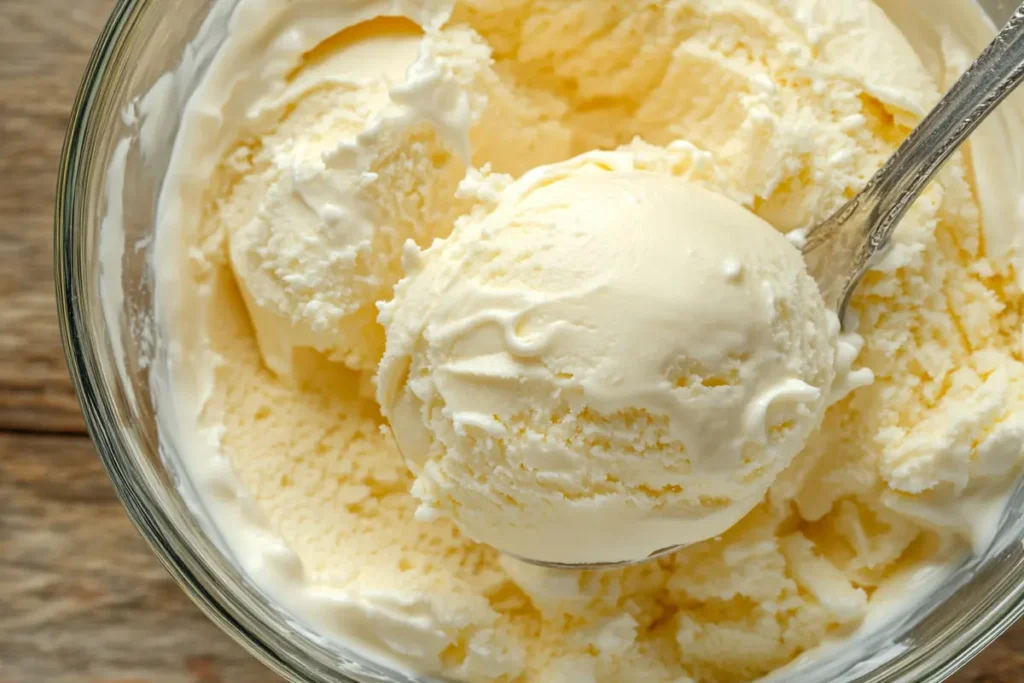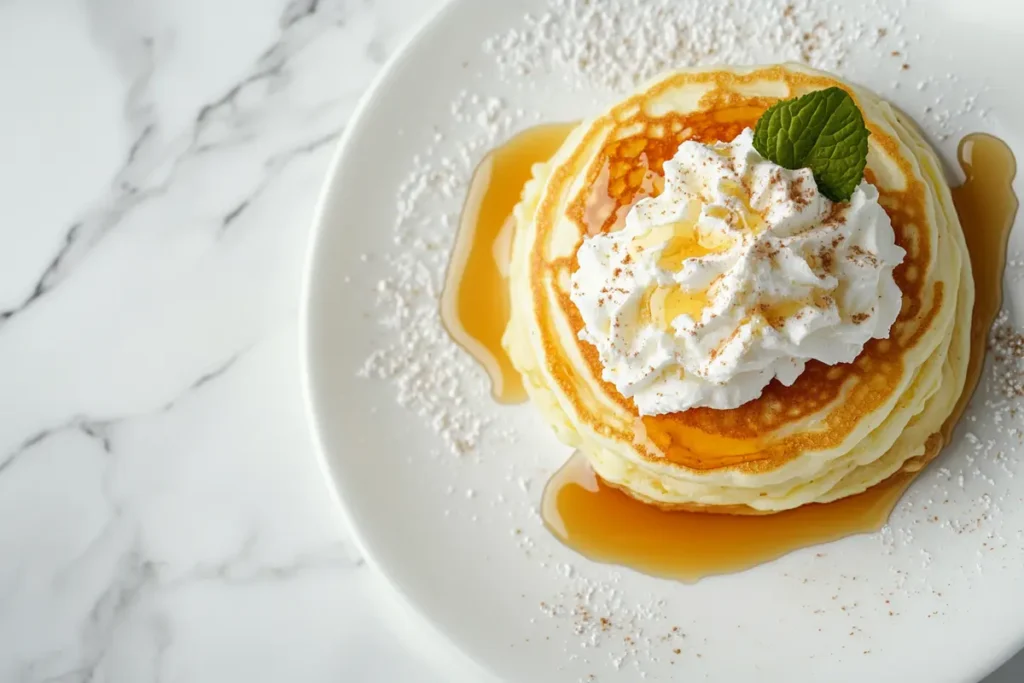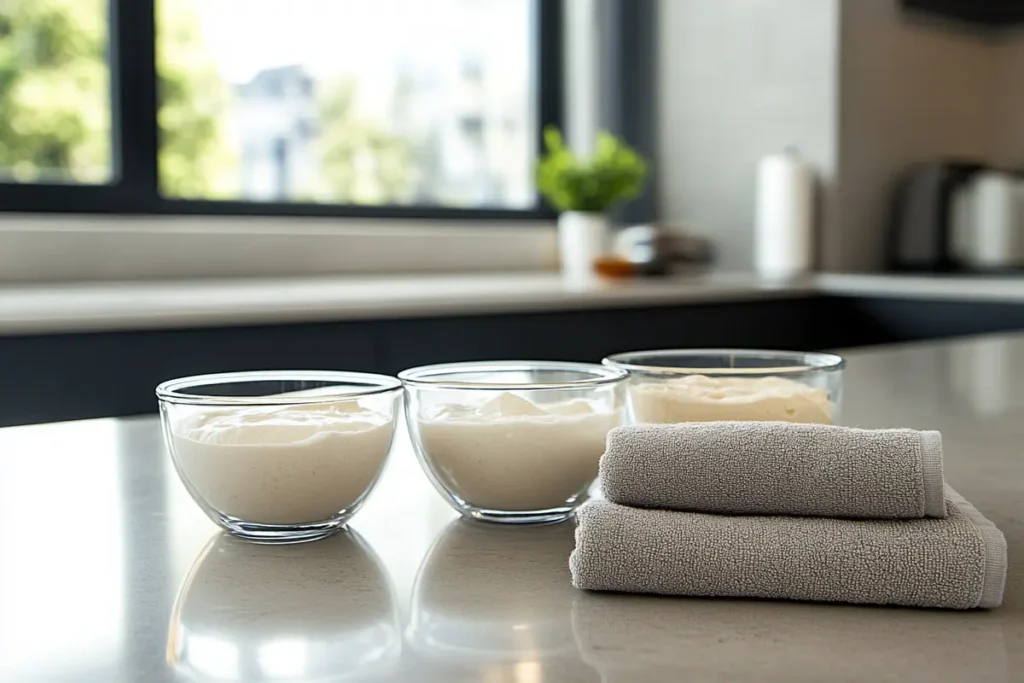Understanding Cream Varieties
What is Cream?
Cream is a dairy product made by skimming the high-fat layer that rises to the top of milk after it is left to stand. This thick, rich substance varies in fat content, texture, and purpose depending on how it is processed. Cream forms the base for heavy cream, whipping cream, and other variations like half-and-half or double cream.
This fat-rich layer is what gives cream its luxurious taste and versatility in cooking and baking. But not all creams are created equal!
Defining Heavy Cream
Heavy cream, often referred to as heavy whipping cream, is a thick cream with a fat content of around 36% or more. Its high-fat content makes it ideal for recipes that require structure and stability, like ganache, butter, or thick sauces.
When you whip heavy cream, it forms firm peaks that hold their shape, which is why it’s the go-to for making frosting and cream-based fillings.
But here’s a fun fact: heavy cream’s richness doesn’t just make it good for desserts—it also adds body to creamy soups and pasta sauces, creating that silky texture that feels oh-so-luxurious.
Defining Whipping Cream
Whipping cream is slightly lighter than heavy cream, with a fat content ranging from 30% to 35%. This means it whips up into a light and airy consistency but doesn’t hold its shape as firmly as heavy cream does.
Whipping cream is often used when you want a softer texture, such as a delicate whipped topping for hot chocolate or pancakes. Thanks to its lower fat content, it also has fewer calories, making it a more forgiving option for those who want to indulge without too much guilt.
Differences Between Heavy Cream and Whipping Cream

The main differences between heavy cream and whipping cream lie in their fat content and stability:
- Fat Content: Heavy cream has a fat content of at least 36%, while whipping cream ranges from 30% to 35%.
- Whipping Ability: Heavy cream forms stiffer peaks and is more stable, whereas whipping cream creates softer peaks that collapse more easily.
- Texture and Taste: Heavy cream is thicker, richer, and more buttery, while whipping cream is lighter with a slightly milkier flavor.
Here’s a quick visual to summarize:
| Characteristic | Heavy Cream | Whipping Cream |
|---|---|---|
| Fat Percentage | 36% and above | 30%–35% |
| Whipping Stability | Holds stiff peaks | Softer, looser peaks |
| Uses | Frostings, sauces, fillings | Desserts, toppings |
| Texture | Thick and rich | Lighter and airy |
Other Types of Cream
For the sake of comparison, let’s briefly touch on other popular cream types:
- Half-and-Half: A blend of milk and cream with 10%–18% fat, commonly used in coffee.
- Double Cream: A very rich cream with about 48% fat, popular in the UK.
- Light Cream: Contains 18%–30% fat, making it suitable for soups and mild sauces.
Though they differ, understanding these options can help you make substitutions when necessary.
Culinary Applications
How to Use Heavy Cream in Recipes: Sauces, Soups, and Desserts
Heavy cream’s higher fat content makes it a superstar in recipes that demand richness and thickness. When you add it to soups or sauces, it resists curdling and blends smoothly, creating that velvety texture we all love.
In desserts, heavy cream is indispensable. It’s used for making:
- Ganache: A glossy chocolate mixture perfect for truffles or cake drips.
- Custards and Ice Cream: The high-fat content gives these treats their creamy, luxurious consistency.
- Whipped Toppings: Stiff peaks make heavy cream ideal for stable frostings and dessert fillings.
Another noteworthy use of heavy cream is in savory dishes like Alfredo pasta sauce or creamy mashed potatoes. Its ability to withstand heat without breaking or separating makes it a trusted choice for chefs and home cooks alike.
Using Whipping Cream in Cooking

Whipping cream is often the hero of light and airy recipes. Because of its slightly lower fat content, it adds fluffiness without feeling overly rich. You’ll find whipping cream in:
- Dessert Toppings: Think dollops on pies, cakes, or hot cocoa.
- Fruit and Berry Bowls: Whipping cream balances the tartness of fruits with its sweet, airy touch.
- Pancake Toppings: A soft whipped cream topping pairs perfectly with breakfast classics.
However, when whipping cream is heated, it can separate more easily than heavy cream, so it’s best used in cold or gently heated applications.
Interchangeability in Recipes
Can you swap whipping cream for heavy cream and vice versa? Sometimes, yes—but it depends on the recipe:
- For Whipping: Heavy cream is ideal for whipped toppings that need structure, but whipping cream works for lighter finishes.
- For Sauces and Soups: Stick to heavy cream for hot, creamy dishes to prevent curdling or thinning.
- For Baking: Heavy cream is generally the safer bet because it provides consistent fat content, which helps with moisture and structure.
In a pinch, whipping cream can substitute for heavy cream in most dessert toppings, though you may notice a slightly softer consistency.
Impact on Flavor and Texture
Heavy cream and whipping cream may taste similar, but their textures are quite different. Heavy cream imparts a buttery richness that’s unmistakable. Whipping cream, on the other hand, lends a lighter, smoother touch that complements rather than dominates.
Consider this when making dishes like cream-based soups—where heavy cream’s robustness adds body—or when topping pastries, where whipping cream’s softness creates a more delicate contrast.
Common Mistakes to Avoid
Even seasoned cooks can trip up when using cream. Here are a few common pitfalls and how to dodge them:
- Overwhipping: Both heavy and whipping cream can turn into butter if you beat them too long. Stop as soon as you see peaks forming.
- Using the Wrong Cream: Don’t substitute light cream or half-and-half in recipes that call for whipping or heavy cream—it’ll likely curdle or fail to thicken.
- Skipping the Chill: Always start with cold cream for whipping. Warm cream struggles to form peaks.
Knowing these tips ensures your recipes turn out as intended, whether you’re crafting a delicate dessert or a rich, hearty sauce.
Nutritional Considerations
Calories in Heavy Cream vs Whipping Cream: A Side-by-Side Comparison
When it comes to calories, heavy cream and whipping cream aren’t exactly “light” options. However, there is a slight difference in their caloric impact:
- Heavy Cream: Around 50 calories per tablespoon, thanks to its higher fat percentage.
- Whipping Cream: Clocks in at about 45 calories per tablespoon, which may not seem like a huge difference but can add up, especially in large servings.
If you’re watching your calorie intake, you might prefer whipping cream for recipes where a lighter touch suffices, like fruit toppings or garnishes. But let’s face it—if you’re going for indulgence, you’re probably reaching for heavy cream!
Fat Content Analysis
Nutritional Comparison of Heavy Cream vs Whipping Cream (Per 100g)
| Nutrient | Heavy Cream (per 100g) | Whipping Cream (per 100g) |
|---|---|---|
| Calories | 340 kcal | 280 kcal |
| Total Fat | 36g | 30g |
| Saturated Fat | 23g | 19g |
| Cholesterol | 110mg | 90mg |
| Protein | 2g | 2.2g |
| Carbohydrates | 2.8g | 3.3g |
| Sugar | 2.7g | 3g |
Fat content plays a key role in why these creams perform differently. Here’s a closer look:
- Heavy Cream: Contains at least 36% milk fat, making it thicker, richer, and capable of holding stiff peaks when whipped.
- Whipping Cream: Has 30%–35% fat, giving it a slightly thinner consistency and a softer whipped texture.
Although the difference may seem small, that extra fat in heavy cream makes it more stable in recipes, especially those that involve heat or require a thicker consistency.
Health Implications
Now, is heavy cream unhealthy compared to whipping cream? It depends on your dietary goals. The higher fat content in heavy cream may not align with low-fat diets, but It’s a fantastic source of fat for keto or low-carb meal plans and works well in dishes like protein pudding for an indulgent, low-sugar treat. On the other hand, whipping cream offers a slightly lower fat option while still adding a creamy touch to dishes.
However, both types of cream are relatively low in sugar and packed with essential fat-soluble vitamins like vitamin A and D. Moderation is key—you can enjoy the richness of cream without derailing your nutrition goals!
Dietary Alternatives
For those looking to cut back on fat or avoid dairy altogether, there are some great alternatives to heavy and whipping cream:
- Coconut Cream: A plant-based option with a rich texture and subtle coconut flavor—great for vegan recipes.
- Cashew Cream: Made from blended soaked cashews, offering a creamy consistency perfect for savory dishes.
- Soy or Almond Creamer: These non-dairy creamers are often fortified and come close to mimicking the consistency of light cream.
While they may not whip quite like dairy-based creams, these alternatives are lifesavers for anyone with lactose intolerance or following a vegan diet.
Lactose Intolerance and Cream
Speaking of lactose, both heavy cream and whipping cream contain only trace amounts of lactose, thanks to their high-fat content. This makes them more tolerable for some people with lactose intolerance compared to milk or lighter cream. However, if you’re particularly sensitive, try lactose-free versions, which are becoming increasingly available at grocery stores.
Understanding the nutritional aspects of cream can help you make informed choices based on your dietary preferences and health goals.
Practical Tips and FAQs
Perfectly Whipping Heavy Cream vs Whipping Cream: Step-by-Step Tips
Whipping cream seems simple enough, but there’s a bit of science behind achieving that perfect consistency. Here’s a foolproof guide:
- Start with Cold Cream: The colder the cream, the faster it will whip. Pop your mixing bowl and whisk in the freezer for a few minutes before starting.
- Use the Right Tool: A hand mixer or stand mixer works best for whipping cream. Whisking by hand is possible but takes time and effort.
- Add Sweeteners Gradually: If you’re making sweetened whipped cream, add sugar or vanilla after the cream starts thickening to avoid thinning it out.
- Watch for Peaks: Stop beating as soon as soft or stiff peaks form, depending on your recipe. Overwhipping can lead to clumpy, buttery cream!
Want to save time? Use whipping cream for lighter peaks and heavy cream for firm, pipeable toppings that stay intact longer.
Storage and Shelf Life
Both heavy cream and whipping cream are perishable, so proper storage is essential to avoid spoilage. Here’s what you need to know:
- Refrigeration: Always store cream in the coldest part of the fridge. After opening, it’s best used within 5–7 days.
- Freezing: Surprisingly, you can freeze heavy cream! Pour it into ice cube trays for easy portioning. However, it may separate slightly when thawed, so stir well before using. Whipping cream doesn’t freeze as well because it loses its airy texture.
- Check Expiry Dates: Never use cream past its expiration date, as it can spoil quickly once opened. If it smells off or curdles, toss it!
Substitutes for Heavy and Whipping Cream

Sometimes, you run out of cream mid-recipe—don’t panic! Here are some handy substitutes:
- Half-and-Half + Butter: Combine ¾ cup of half-and-half with ¼ cup of melted butter for 1 cup of heavy cream substitute.
- Milk + Cornstarch: For a lighter option, mix 1 cup of whole milk with 2 tablespoons of cornstarch to thicken it.
- Evaporated Milk: Its thicker consistency makes it a decent alternative for sauces and soups.
These swaps work well in cooking, though they won’t whip into peaks for desserts.
Choosing the Right Cream for Your Recipe
Picking the right cream can make or break your dish. Use this quick guide to decide:
- For Whipping: Use heavy cream for firmer whipped toppings and piping; use whipping cream for soft, fluffy toppings.
- For soups and sauces: heavy cream prevents curdling and adds thickness, as seen in this comforting cream-based turkey soup recipe — ideal for creamy chowders and pasta sauces.
- For Desserts: If you need the cream to hold its shape (like in mousse or frosting), heavy cream is the winner. Whipping cream is great for parfaits or as a topping for delicate desserts.
Frequently Asked Questions: Is it better to use whipping cream or heavy cream?
Is whipping cream healthier than heavy cream?
Yes, whipping cream has slightly fewer calories and fat due to its lower fat percentage. However, both should be consumed in moderation.
Can I make whipped cream from heavy cream?
Absolutely! Heavy cream whips into firmer, longer-lasting peaks compared to whipping cream. It’s perfect for frosting or piping onto cakes and pies.
Why is my whipped cream turning into butter?
Overwhipping causes the fat to separate from the liquid, creating clumps of butter. To avoid this, stop whipping as soon as you see stiff peaks.
Can I use heavy cream in place of whipping cream?
Yes, but remember that heavy cream is richer and may slightly change the texture of your dish. If your goal is lightness, stick to whipping cream.
What happens if I heat whipping cream?
Whipping cream can curdle when exposed to high heat because of its lower fat content. If you’re making a hot sauce or soup, heavy cream is a safer option.
Conclusion
In the battle between heavy cream and whipping cream, the right choice depends on your culinary needs. Heavy cream wins for rich, thick sauces and firm whipped peaks, while whipping cream shines in lighter, airy desserts and toppings. Both have their place in the kitchen, offering delicious versatility and that unmistakable creamy goodness.
Now that you’re armed with the facts, you can confidently decide which cream to use in your next culinary creation!

